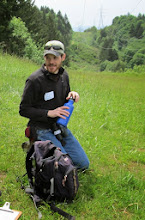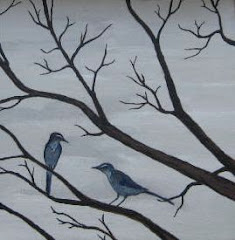
We walked along the ponds and found the usual crowd-pleasing species such as Acorn Woodpeckers, Wood Ducks, and Great Blue Herons. The day's best find was probably a Wilson's Snipe resting along the edge of a pond, spotted by a sharp-eyed participant.
As we neared the large oaks that mark the end of the loop, I heard the scream-like call of a White-breasted Nuthatch. After a little searching, we found a pair of nuthatches creeping up and down the trunks. This and other great sightings made for a successful field trip that probably will be my last at Dawson Creek, as Sarah and I plan to move to Portland at the end of the year. We have a few hurdles to clear before the move becomes a reality, but I may soon need to change this blog's title.
Here are the birds seen and heard during the field trip.
Pied-billed Grebe
Great Blue Heron
Canada Goose
Cackling Goose
Mallard
Gadwall
American Wigeon
Green-winged Teal
Wood Duck
Bufflehead
American Kestrel
Wilson's Snipe
Mourning Dove
Anna's Hummingbird
Northern Flicker
Acorn Woodpecker
Downy Woodpecker
Western Scrub Jay
Black-capped Chickadee
Bushtit
Bewick's Wren
Winter Wren
American Robin
White-breasted Nuthatch
Spotted Towhee
Song Sparrow
Golden-crowned Sparrow
Brewer's Blackbird
Red-winged Blackbird
























